It is very difficult to decipher why there are lot many political parties in Kashmir. But it is quite easy to link the proliferation with the events that reshaped Kashmir’s recent history, writes Masood Hussain
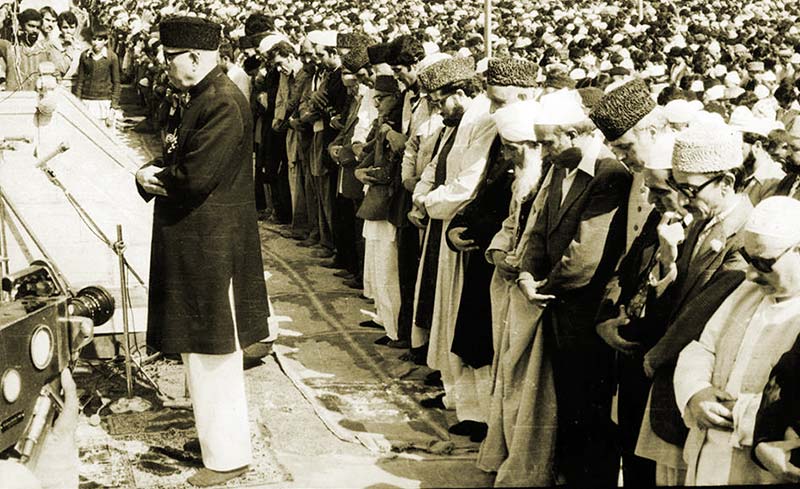
On the social websites, there has been a popular slang that befits Kashmir: “One Kashmiri is a spokesman; two Kashmiris are a party and three make an alliance…” This reality is so starkly visible in Kashmir that it has emerged its key weaknesses as a society. The conflict and the ideological dichotomy that spans over decades have added to this stratification that now everybody seems against everybody in politics.
In the twin ideological camps that make Kashmir’s political landscape, the baskets are full of names, faces, letterheads and the ‘political ideology’. It is such a huge universe within this space that people migrate within the parties and even makes ideological quantum jumps. In all cases, they interestingly, retain the basic clout.
Right now, three Hurriyat Conferences’ exist in Kashmir’s separatist fold as independent entities. This is, interestingly, at a time when another super-structure called Joint Resistance Leadership (JRL) operates as the main mover and shaker of Kashmir, at least for the sake of paralysing the routine life. Comprising the separatist triumvirate Syed Ali Geelani, Mirwaiz Umer Farooq and Yasin Malik, the three individuals have seemingly emerged as the main voice, despite the limitations enforced by the systems.
Unionists, the ‘mainstream’ also exhibits the same trend. Kashmir’s entire mandate is divided between the two regional political forces and one central party, the Congress. The divisions get stark when Jammu votes en-block to either Congress or the Bhartiya Janta Party (BJP).
But how the people were divided into parties and factions is a long story, rooted partly in pre-partition era.
Kashmir, a former VC of the University of Kashmir, once said, has been talking in two languages: in one within and in another language to outside. The observation might be an unchallenged reality for most of Kashmir’s contemporary and not-so-distant history but there has been just a small patch when Kashmir talked in one voice: that was around 1930s. Before and after that the VC’s observation is not grossly incorrect.

The emergence of an indigenous voice in an autocratic system started from a Reading Room. It took its own time and converged into Muslim Conference (MC) which increased the stakes of various players in the mainland India. That led to the emergence of National Conference (NC) and, in reaction to it, came the division.
Post-accession, as the mutiny (which had started earlier) in parts of the erstwhile state of Jammu and Kashmir, upgraded to the first war between India and Pakistan, it led to the unequal division of the state. Erstwhile state of Jammu and Kashmir re-emerged in two parts. It was NC ruling the J&K and MC the PaK. The two parties worked closely with the political power centres in Delhi and Islamabad. NC remained a formidable political party that was unchallenged on basis of the mass support, though there were murmurs of opposition from sections of the people. The Mirwaiz camp was being seen as an opposition on ground level but its influence was limited to certain urban belts as the NC was ruling the roost because of the landmark land to tiller reform.
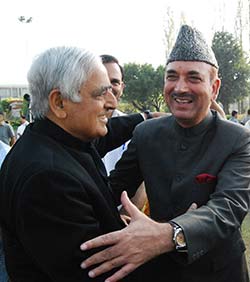
Unlike PaK, the NC in J&K could not manage peace with the Indian National Congress for a long time. Almost a year after the landmark1952 agreement, NC founder and the Prime Minister Sheikh Mohammad Abdullah was deposed and arrested. His Deputy Bakshi Ghulam Mohammad took control of the power and the political party. For many years later, the new NC superimposed itself on the original NC till the followers of the Sheikh Abdullah created the Plebiscite Front.
For many years, the ruling NC was seen as an extension of the Congress. Pandit Nehru, the towering Congressman never felt getting the Congress into the state because his party was in complete unison with the ruling NC in the state. A leftist splinter group of the NC did form Democratic National Conference in 1957, of which Ghulam Mohammad Sadiq, DP Dhar and Mufti Mohammad Sayeed were important figures. This, political commentator Mohammad Sayeed Malik believes, was aimed more at creating a counter-weight to a dominating Bakhshi rather than emerging as a political force. “Kashmir politics has always been dominated by faces and persons rather than ideas and ideology,” Malik said. “It is the simple answer to why the proliferation is there.”
The major political development took place in January 1965, when Ghulam Mohammad Sadiq merged his NC with the INC. “He believed that it is better to be India rather than be a part of India,” Malik said. “It was in his era when the autonomy was undone to a page extent.” Sadiq was the last J&K ruler who took over as the Prime Minister of the state but died as the Chief Minister in 1971. It is this nomenclature that J&K is sustaining to date.
Unlike Sadiq, Bakhshi continued to claim that he belongs to NC. He, in fact, contested an election in 1971 as an NC candidate for the LokSabha and lost to noted journalist-politician Shameem Ahmad Shameem.
The major political shifts took place between 1971 and 1977. The fall of Dhaka was a primary factor in reshaping Kashmir politics. It led to some reconciliation between Sheikh Mohammad Abdullah and the INC and, at the same time, the rise of strong anti-INC political force in Delhi in the form of Janta Party, presell in reaction to the emergency in 1975. Sheikh’s reconciliatory efforts actually gave a new lease of life to the anti-NC forces to react so they used the same political space to settle the scores. During the emergency government days of 1947, and later during Bakhshi era, there were a series of government interventions which have created a long-term impact on the politics of Kashmir and the elements who suffered on that counted fought and continue fighting in the political space, even today.

Apart from reconciliation that led to the return of Sheikh Abdullah and his NC back to power, there were two major developments in this era. Firstly, the Jamat-e-Islami that was working in the social space of Kashmir jumped into politics and won five assembly seats. The party that believed in the disputed status of Kashmir, however, had strong ideological issues with NC, an equation that still reflects on the ground in one or the other way. Secondly, the Janta Party movement that emerged at the centre had strong supporters in Kashmir. The anti-INC movement was supported by Kashmir’s political forces which had nothing much in common.
It was this era that also saw the emergence of various strains of Communism acquiring their own identity. Earlier, they were surviving as the medulla of various political formations, especially NC.
The existing political forces continued interacting within the space, now dominated by the Sheikh, the towering leader of them all. Barring a serious backlash, apparently supported by the ruling NC in 1979, against Jamat-e-Islami in wake of the hanging of Zulfikar Ali Bhutto, nothing much happened. In fact, the transition of power after Sheikh’s demise in September 1982, was smooth and clean. It was the sympathy wave that helped the flamboyant Dr Farooq Abdullah get a massive mandate in 1983 assembly elections.
Kashmir started changing quite rapidly in the 1982-87 era and its impact on the politics of the place proved enormous. There were three major developments that dominated the scene in these five years, all impacted by the absence of Sheikh.

Firstly, it was the division within NC that started with the rebellion of Ghulam Mohammad Shah, Sheikh’s darling son-in-law, who was considering himself to be the natural heir to the Sher-e-Kashmir. Once the power was inherited by Dr Farooq Abdullah, he sought help from INC’s, then led by Indira Gandhi in Delhi and Mufti Sayeed in Srinagar, and managed a palatial coup. This led to the creation of Awami National Conference (ANC) that was more of a temporary power related structure than a political force. Most of the NC members who had sided with ANC eventually returned to NC later.
Secondly, the signing of the death warrant of JKLF co-founder Maqbool Bhat was a major development of the era. It changed Kashmir completely and forever.
Thirdly, the situation had changed so much that it created a vast gulf and space for the emergence of a new political force. That space was filled by Muslim United Front, a grand alliance of various anti-establishment and apparently separatist political forces in which Jamat-e-Islami was perhaps the major factor, both behind the creation and its outcome. Interestingly, three other splinter political formations including ANC, Peoples’ Conference (PC) of Abdul Gani Lone and Awami Action Committee (AAC) of MirwaizMolvi Mohammad Farooq was outside the MUF. While AAC was part of the Double-Farooq Accord, the MUF leaders found it difficult to get ANC in and there were strong issues on seat sharing with PC.
The rise of MUF unnerved the traditional power structure and in order to undo its impact, the government resorted to rigging. Though there were no chances of MUF emerged as the governing force in the civil secretariat, there were strong chances of it emerging as major opposition and was perhaps the last major initiative in which the “separatist” fold might have become an extension of the unionist narrative.
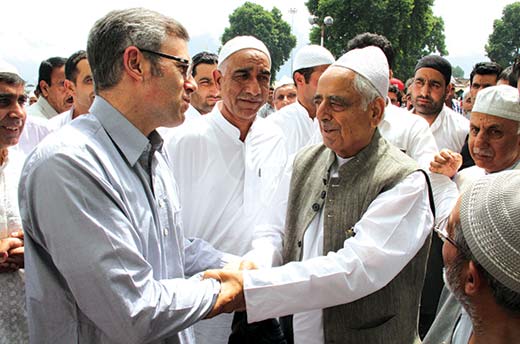
All these factors were the main factor that led to the emergence of the gun in late 1988. This came with a new system of politics. On the ruins of the MUF emerged the Tehreek-e-Hurriyat-e-Kashmir (THK), another amalgam that was short-lived. Finally, in 1993 emerged the Hurriyat Conference, this time with PC being part of it. In the subsequent years, the Hurriyat failed to remain a monolith and it started having newer variants. Feeling chocked in the midst of a ruthless counter-insurgency, at one point of time, the Jamat-e-Islami, a major constituent of Hurriyat, expelled Syed Ali Geelani paving way for the creation of revival of THK as a party and not as an alliance, as it was in 1990.
Right now, there are three parallel Hurriyat’s – one each led to Geelani, Mirwaiz Umer Farooq and Shabir Shah. In certain cases, the constituents bifurcated to send one member each to two similar alliance, which apparently has nothing much different in aims and objectives but still are separate. In an interesting case, PC has one brother in Hurriyat (m) and another a cabinet minister as a BJP ally. JKLF is the only political party in the separatist fold that is not part of any Hurriyat.
Though the Hurriyat is considered as an outpost of Islamabad, still there were times when oneHurriyat was considered to be closer to Islamabad than the other one. This closeness was starker during Parvez Musharaf era.
But what is more important is that three top separatist leaders – Syed Ali Geelani, Mirwaiz Umer Farooq and Yasin Malik, joined hands to create the so-called JRL. An outcome of the 2016 unrest, the JRL lacks a constitution and is, apparently working on the common minimum programme that the triumvirate have. In Kashmir’s fragmented ideological space, JRL is perhaps more important than all the Hurriyat’s’ put together.
The political space changed a lot after NC got a landslide mandate in 1996, one of the most questionable electoral exercises in Kashmir, in which voters were shepherded to the polling booth through coercion and intimidation. Congress party, then somehow relegated to the background, wanted to fish in Kashmir’s troubled waters. They got Mufti Mohammad Sayeed back to Congress – he had earlier left with V P Singh to be his first Muslim Home Minister of India and started working seriously. It gave them some space in the assembly and on Kashmir front, they were the only opposition.

Barely two years into Congress, Mufti said the party lacks space to listen Kashmir in its broad nationalistic agenda. He said there was a requirement of a regional force so he set Peoples Democratic Party (PDP) in 1998. For the next three years, it worked quite hard, moving from almost home-to-home hawking the healing touch. In 2002 elections, it emerged as the second polled political party in Kashmir and stitched an alliance with the Congress. PDPs initial three years in governance distinguished it from all earlier regimes. But the coalition collapsed under the weight of Amarnath yatra controversy in 2008 paving way for a fresh poll that saw the return of NC, this time with Congress as an ally, under the leadership of clean-slated Omar Abdullah.
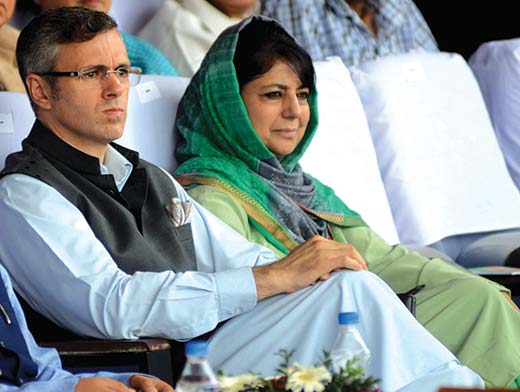
In 2014, after the polls were held in the backdrop of a strong mandate to Narendra Modi at the centre, the fears mounted about the special position that J&K enjoyed. The peculiar social engineering that the new BJP employed to impact India’s voter politics, scared Kashmir and it voted in hoards. But PDP fell short of the numbers. It eventually stitched an alliance with the BJP. A year later, Mufti died and his daughter, Mehbooba Mufti took some time to decide about the continuation of the alliance. Finally, she jumped in after she was clearly told that most of her lawmakers were willing to get back to governance.
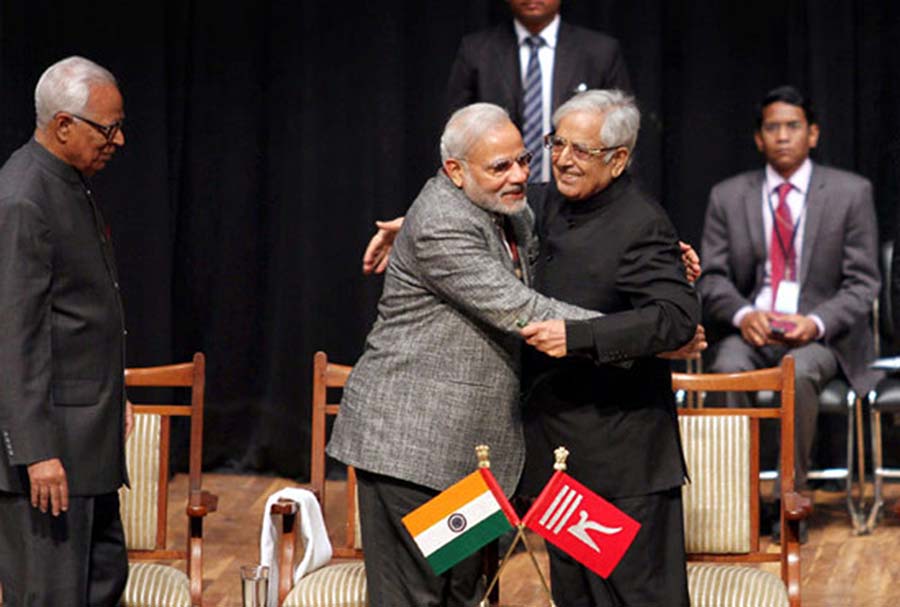
As the state is heading towards a new election, there is nothing much that parties could celebrate, especially the PDP. Even the BJP has nothing much to celebrate as far as its larger goals are concerned. The only gains that are around are that BJP has made inroads in Kashmir and it has a sizeable number of workers at the ground level. In recent past, BJP was keen that the Panchayat Elections would take place. The objective was that BJP would show its importance in Kashmir where it would have easily managed various Panchayats’. Besides, the vulnerability that the situation would have added to certain people could have also found refuge in BJP. Because of the security situation, the Panchayat election has been deferred on the lines of LokSabha polls for the South Kashmir.
But, insiders suggest, there is a new thought process in Delhi: why do not get yet another political force as the new stakeholder in Kashmir. If the political grapevine is to be taken seriously at is face value, then the new thought process is to create three political powers in Kashmir: one in the south, one in the centre and another in the north. It is the north that seemingly is at the top priority in north block.
If at all it happens, is something to be watched. But the objectives are clear. One to have a Jammu Chief Minister (forget the Kashmiri speaking Bhaderwah man GhulamNabi Azad) to rule J&K. Second, to have a delimitation that will get assembly seats in Jammu almost equal to Kashmir, if not more. This idea is being seen as the ultimate way-out to take the political fragmentation to the next level and ensure the disempowerment is visible in a new brand of political empowerment. Will that help minimise costs for managing Kashmir? It is too early to say.















